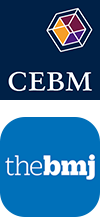



 “It is not our differences that divide us; but the inability to recognize, accept and celebrate those differences” said writer Audre Lorde.
“It is not our differences that divide us; but the inability to recognize, accept and celebrate those differences” said writer Audre Lorde.
For decades, there has been a gap between researchers and clinical practitioners. Lately, Evidence-based healthcare is increasingly gaining popularity to bridge this gap.
Globally, Clinical Practice Guidelines have been formulated to guide clinicians. These guidelines are usually systematically developed statements designed to help healthcare providers, payers, consumers and policy-makers in deciding ways to prevent, diagnosis and treat diseases.1 However, today is an era of personalized medicine.
While formulating and implementing guidelines or clinical decision making algorithms, one needs to be aware of the multiple clinical variables that apply to an individual patient and/or a specified population. Genetic variations, ethnic differences, differences in diet and climate, etc. are all responsible for different pattern of diseases and varied responses to same set of treatments2.
It has been stated that ‘We are more microbes than cells’, when infact, the gut microbiota alone carries 150 times genes than the entire human genome.3 Hence, the effect of one’s microbiome on health and diseases cannot be underestimated.3 The role of epigenetics, a mechanism of expression of genes without altering the genome, combined with knowledge about technologies like CRISPR/Cas9 gene editing and next-generation sequencing have enabled a better understanding of the epigenetic change and gene regulation in human diseases, thus, giving way to newer approaches for molecular diagnosis and targeted treatments,4 although the impact to patient care and outcomes is still to be observed.
The gap between research and practice is more fundamental; and can be attributed to a host of other factors like lack of communication between research-scholars and clinicians, reluctance of practitioners to change from traditional methods of practice, inadequate practitioner training, misfit between treatment requirements and available organisational structures, insufficient administrative support and clear understanding of co-morbidities.4,5 The answers to such challenges can be addressed by ‘Translational research’.5 The practical utility of researchers can be increased by facilitating two-way communicating through the translation of research findings into language of practical use as well as clearly communicating the research needs of a community. Real life messy variables such as co-morbidities, financial constraints, inadequate insurance coverage, cultural and family issues need to be fully understood.
Possible solutions that may help close this gap include:
While the gap between the research and clinical practice is real, there are potential solutions that can close this gap!
References:
Conflicts of Interest: None
Bio: I am a practicing clinician based in Mumbai, India. I have a keen interest in research activities, content writing and medical emergencies. My educational background includes a Bachelors degree in Medicine and a fellowship in Industrial Health along with a couple of original researches. Having a craving for knowledge and passion for learning new ideas, I am actively involved in free lance medical content development for publication houses and companies. I also enjoy contributing my service in managing on-field medical emergencies in various events. I am currently exploring potential avenues that may help me ‘make a difference’!.. “